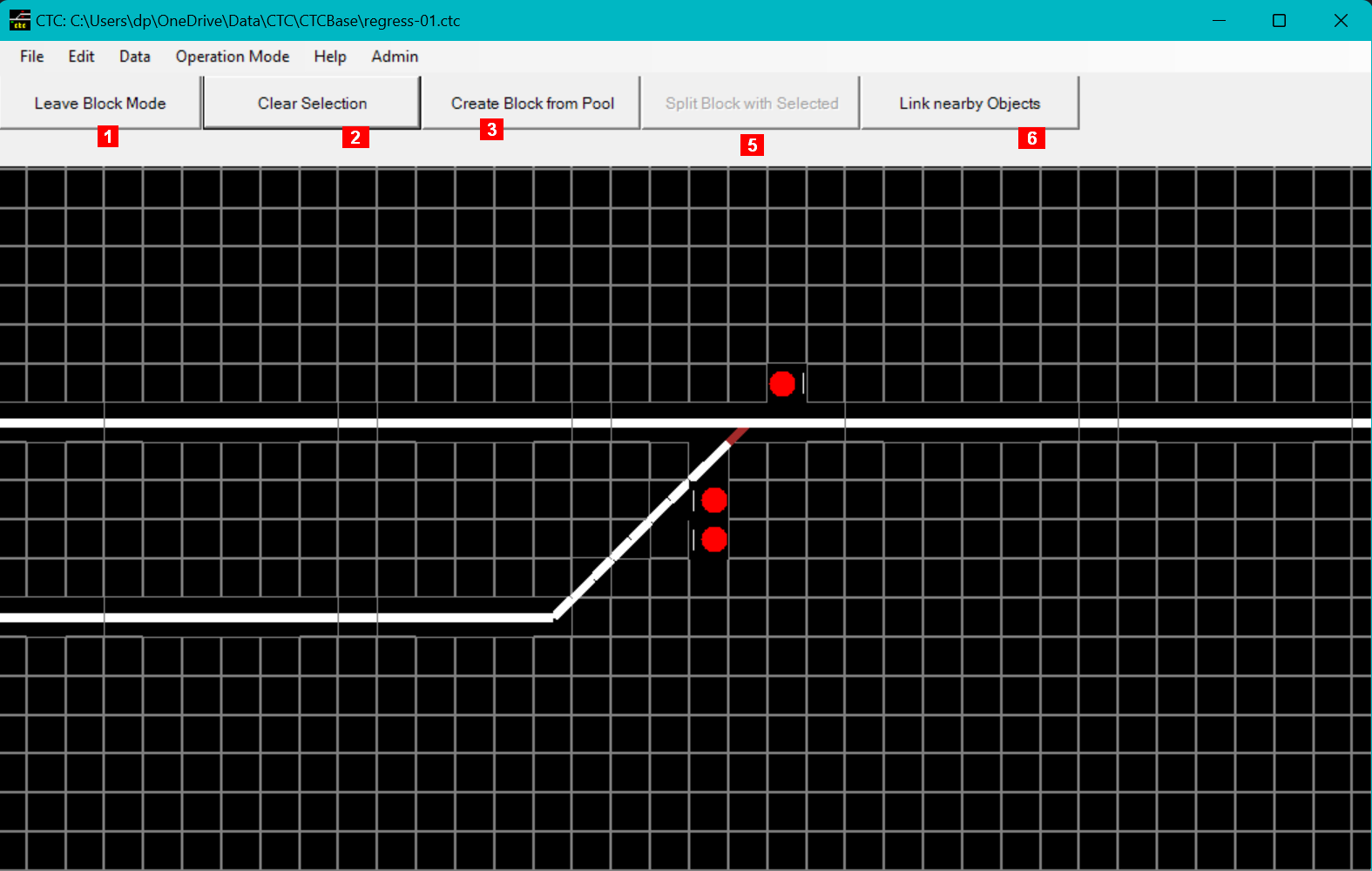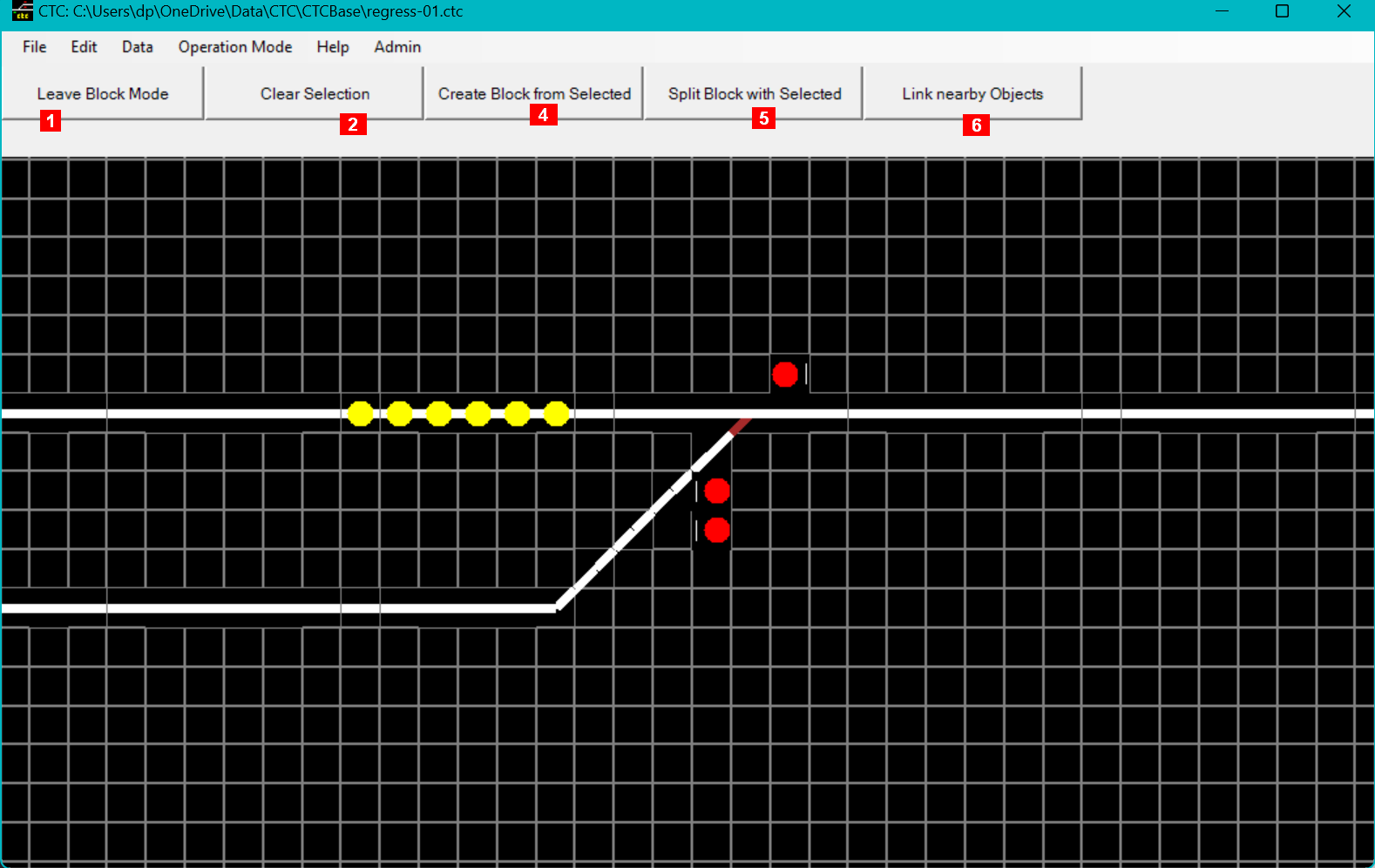With this block tool you can select track elements from one or more blocks and create a new block from them. For details how to mark them for the selection see here. Furthermore you can link scene elements together that have not been linked yet.

Nothing selected

Some track elements are selected
-
Leave Block Mode : Returns to Editor Level where you can select another tool or leave the Editor altogether.
-
Clear Selection: Unmarks all grid elements.
-
Create Block from Pool: Track elements can be moved from their block assignment to a pool from where it can be moved to different blocks. With this option here you can create a new block with track elements currently located in the pool. This new block will show up on the track diagram, and will have default properties and not be linked to any other elements on the scene. The pool will be emptied.
If a track element in a pool has a grid position already used by another element already on a scene, it will be moved to a grid element near the original position.
If the pool is empty, no block will be created.
-
Create Block from Selected: takes out all marked track elements from of their current block assignment and puts them into a brand new block. This new block will have default properties and will not be linked to any other elements on the scene. Except for the track elements affected by the move, the properties of any existing block, including the linkages, length, station assignment remain unchanged. Marked grid elements containing other scene elements are not affected.
Note: if the selection does not cover any track elements, no block will be created.
-
Split Block from Selected: opens the CTC Split Block panel where you can specify how you want to split the selected block. This option is available only if the marked track elements belong to exactly one block – which will be passed in as a list of track elements for one of the blocks created there (you can adjust the distribution of the track elements of the split blocks there). Marked grid elements containing other scene elements are ignored.
-
Link nearby objects: Connects loose ends on the scene. In particular, objects like blocks, switches etc, will be connected if they currently don’t have connections, and they are located nearby as shown on the diagram for a connection to make sense. For single grid objects (like switches) the location and the sub type determine where to look for possible connections. For blocks the tool looks for the outermost track elements to make the determination. Two-track drawbridges handle each track independently.
After the nearby connections have been made, CTC marks the spots that could have connections but there was nothing close there with yellow dots. You can link a pair of them by clicking on the yellow dots: use left mouse button on the first, and the right mouse button on the other (see picture below)
The current collection of all objects does not change by either the nearby link function or by manually connecting them.
Note: the outermost track elements of a particular block are the leftmost and rightmost elements on the diagram (the first if more than one would qualify), and if they are the same, the topmost and bottommost. This information is then stored in the block data for use of the locator function in CTC. If the track elements of a block are such that they are broken up into several stretches on the diagram, or if they form a horseshoe curve on the side, the outermost position will always be updated, but a connection will not take place.
Note: It is allowed to move track elements from several different blocks into the new one, and it is possible to end up with a block with no track elements – which may not appear very useful, but CTC does not place a restriction to allow flexibility in your work flow.

After “Link nearby Objects” is executed, the block tool marks additional connection possibilities with yellow dots that can be clicked on (first left then right mouse button) to link those ends together.